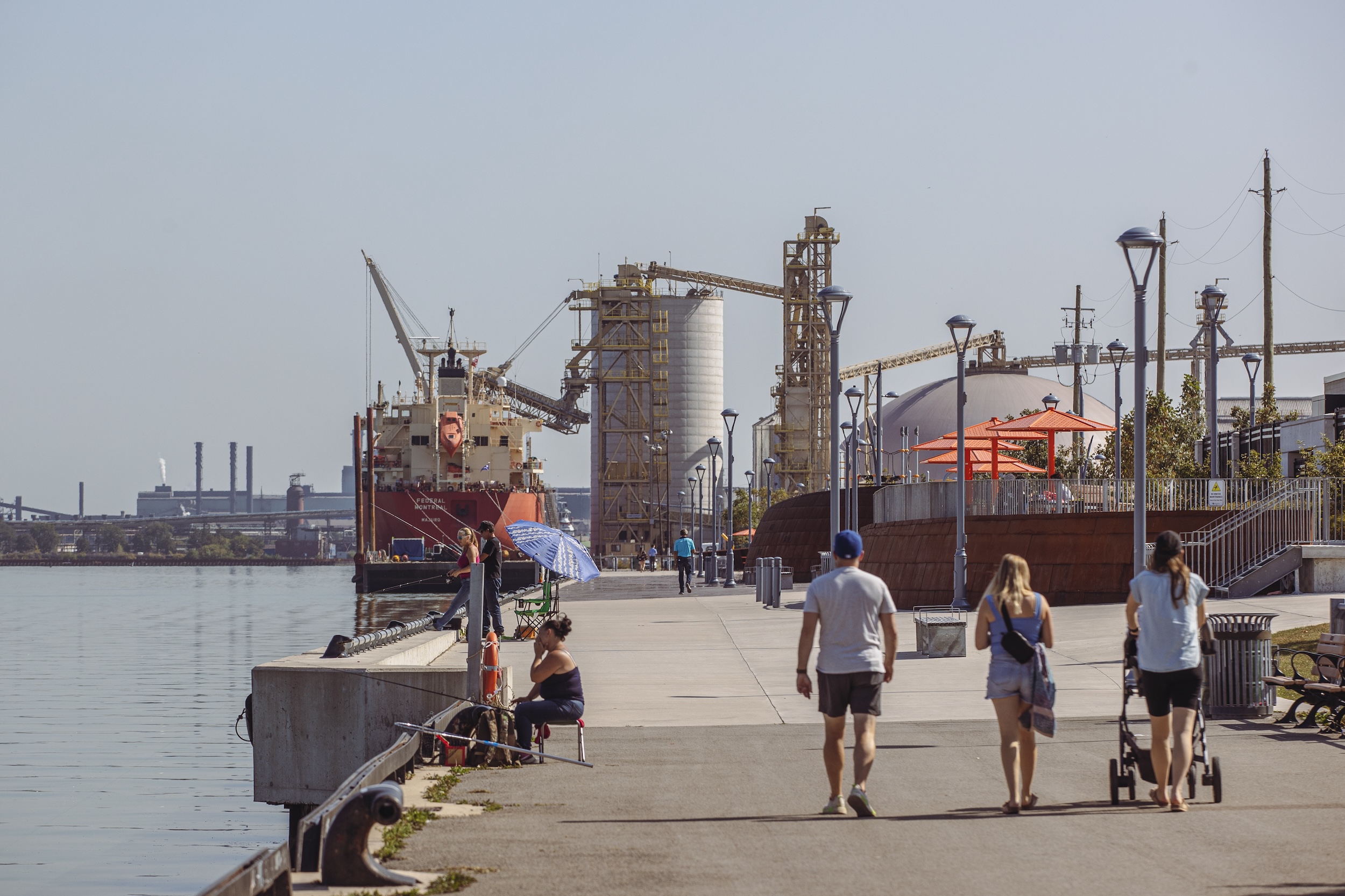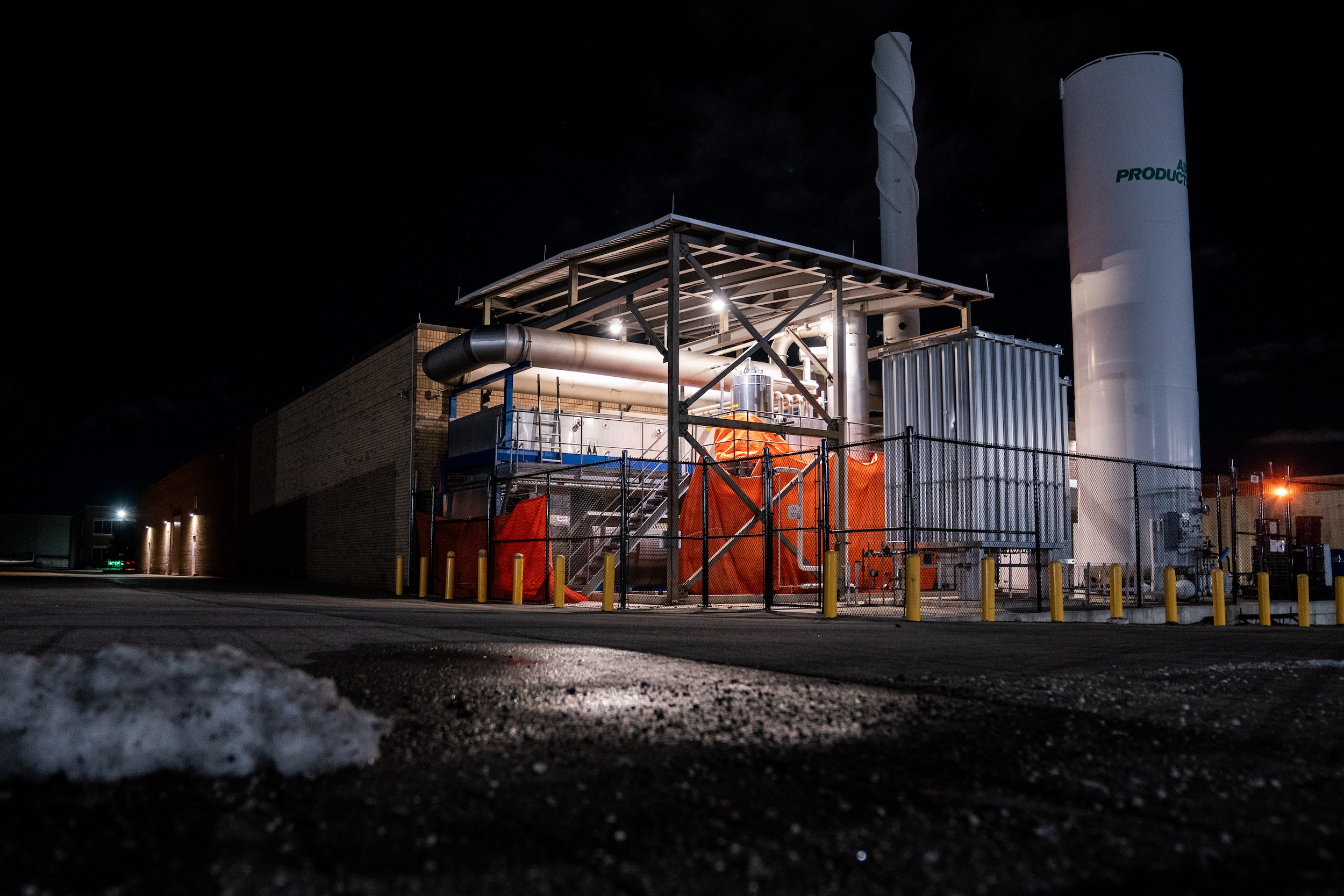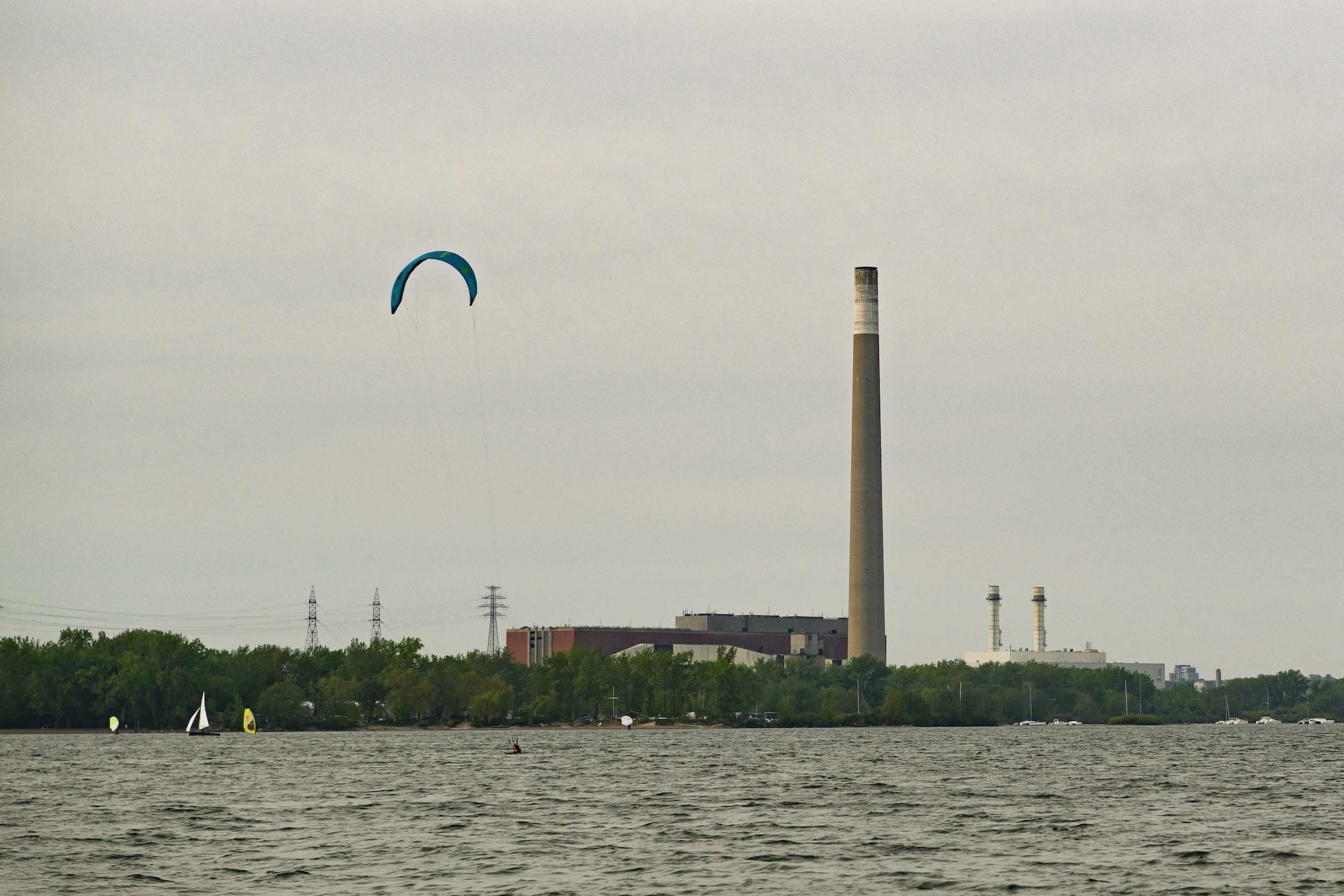
Water determines the Great Lakes Region’s economic future
Climate change, geopolitics and business opportunities power a blue economy
When a company plans a new factory in Ontario that will regularly emit toxic chemicals, there are two ways it can get a permit. One is simple and has little oversight, while the other is more stringent and scrutinized.
Ontario’s Environment Ministry introduced the two-level permitting process as part of the Open for Business initiative back in 2010, under the Dalton McGuinty government. The idea was that by splitting up the process, low-risk permits could move along quicker in order to reduce a hefty backlog and shorten wait times for approvals.
But a generation later, it’s not clear how exactly the provincial government determines which path a company must take when pursuing an industrial project that could impact the environment or human health. Environmental advocates say this leads to confusion, lax regulation and harmful emissions potentially slipping through the cracks — and limits the public’s opportunities to weigh in.
For riskier activities, such as making changes to a municipal drinking water system or taking more than 50,000 litres of water per day, the long-standing, more rigorous Environmental Compliance Approval remains in place.
The newer Environmental Activity and Sector Registry process was established for “less complex, lower risk” industrial activities such as “non-hazardous waste transportation” and “small ground-mounted solar facilities.” Ultimately, the goal was “making Ontario more attractive for business development.”

This change was something lawyer Ramani Nadarajah spoke against at the time. Formerly a lawyer for the Ministry of the Environment, representing the provincial Crown in environmental prosecutions and appeals, Nadarajah was working at the Canadian Environmental Law Association in 2010. She was one of three authors of a detailed report to the ministry, sent on behalf of several major environmental law organizations, that outlined concerns about immediate and long-term oversight.
Nadarajah told The Narwhal that her early worries centred around the government leaving monitoring up to industry. The ministry did “not appear to have any plan in place to ensure inspections and enforcement of these types of activities,” Nadarajah said. “The [Environmental Activity and Sector Registry] regime’s really a form of self-regulation. There’s really no government oversight.”
Since then, she said, things have only gotten worse. “They’ve essentially just deregulated the entire sector,” Nadarajah said.
While provincial regulations and standards apply to activities that could also harm water and land, this story focuses on air pollution. Ontario’s Ministry of Environment, Conservation and Parks is responsible for regulating contaminants released into the air “by various sources, including local industrial and commercial facilities, to limit exposure to substances that can affect human health and the environment,” according to the province’s air quality rules.
There is no transparent, publicly available explanation of how the Environment Ministry decides which permit a plant requires — its website says the stricter compliance approval is necessary for operations that will be “releasing contaminants into the environment,” but also that the self-directed registry could cover “activities that discharge or may discharge contaminants into the air.”
The Environment Ministry did not respond to The Narwhal’s questions about how it decides which of these regulations to apply to industrial facilities, or how it ensures the safety of residents and the environment around those with less stringent permits.
There are a few key differences between the two pathways for industrial regulation in Ontario, the long-standing Environmental Compliance Approval and the Environmental Activity and Sector Registry introduced in 2010.
On one hand, Environmental Compliance Approvals “allow businesses to operate with environmental controls protecting human health and the environment,” the province’s page on the permit reads. Controls vary based on a facility’s operations; the ministry may dictate, for example, that a company can only operate 60 days per year at a given site, or the amount of certain chemicals used not exceed an allotted amount.
To determine any controls, technical analyses submitted by the company are vetted by technical and scientific staff at the Ministry of Environment, Conservation and Parks, a process the ministry’s site says it aims to finish within a year, but Nadarajah says often takes longer because of delays and backlog. It includes a mandatory 30-day public comment period allowing nearby residents, environmental groups and other stakeholders to participate.
Here’s a real example of how the process can work: in 2020, Motor Coils Manufacturing in Brockville, Ont., submitted information about the oven it uses to make equipment for rail lines, which exhausts into the air. The company’s eventual Environmental Compliance Approval asserts it can only use this oven if certain hazardous materials, including Teflon, aren’t part of the process, and if a certain minimum temperature is maintained at all times. There are also rules around record-keeping and making those records available on request.
On the other hand, the Environmental Activity and Sector Registry simply requires online self-registration. A company submits a nine-page checklist to the ministry’s online portal, and the process can often be completed within a matter of months. To register for air emissions, a company has to pay a fee of $2,353 and can commence operations as soon as it submits a form and is listed on the public registry.
This registry was meant to “reduce the burden on industry who wanted to operate in Ontario,” researcher Fe de Leon, Nadarajah’s colleague at the Canadian Environmental Law Association, said. It is nominally meant for what the province calls “less complex operations” that have a lower chance of harming the environment.
“There’s not a lot of scrutiny around it, and there’s not a lot of accountability,” de Leon said.
The registry does not require companies to submit a formal application to be reviewed by the ministry. Nadarajah said she raised concerns about the lack of ministry staff involvement in 2010, as well as the lack of a standard process for ongoing monitoring.

Some controversial operations have ended up in this category. The Narwhal recently reported on two Ontario facilities — a plastics factory in North Bay owned by Industrial Plastics Canada and Sterigenics, a sterilization company in Mississauga — that are on the registry despite public concern about the potential harm of their operations. The Environment Ministry and Industial Plastics Canada didn’t acknowledge questions about how the decisions not to seek or require an approval were made. Sterigenics sent an email saying that its “state-of-the-art Mississauga facility deploys the most advanced safety and environmental technology available and was constructed in full compliance with federal, provincial and local regulations.”
Nadarajah said there has been a “disturbing trend by the ministry” of adding industrial activities to the self-registration stream, which she says “would have very significant adverse impact on the environment.” There’s also less opportunity for citizens to voice concerns, since the registry doesn’t require a public comment period.
“Not only have we lost government oversight as a result of [the Environmental Activity and Sector Registry], but there’s also no public oversight as well,” Nadarajah said.
Other experts have also raised concerns about what is lost with the public comment period.
“Good governance should involve the public in all facets of decision-making, and not only so that the public has an opportunity to voice potential concerns, but also as a process of education,” Carly Dokis, a resident of North Bay, earlier told The Narwhal. The Nipissing University professor works to encourage citizens, including Anishinaabe communities in northern Ontario, to participate in environmental governance for mines and mass contamination sites.
“Public engagement is a two-way conversation,” Dokis said. “It’s also an opportunity to engage in dialogue … so that the company can learn what the concerns of the community are, and the community can learn how the operator is going about … ensuring that there is no environmental impact. That opportunity for dialogue becomes missed when public engagement is stifled.”

Five years before the 2010 registry, McGuinty’s Environment Ministry introduced a system of “technical” and “site-specific standards” that allowed certain industries and factories to eschew air regulations. A site-specific standard allows a company to apply for an exemption for a specific location where it cannot meet regulatory limits to contain or limit emissions because it doesn’t have or can’t afford adequate technology.
In 2010, the standards combined with the self-registration regime to essentially make provincial air standards optional, Nadarajah said.
“Air standards that are set were established to ensure they didn’t cause adverse impact on the environment and the focus of the ministry should be to ensure that we encourage and provide incentives for companies to actually meet the standards as opposed to exempting them,” Nadarajah added.
Site-specific exemptions are now common in three Ontario regions known for degraded air quality, where they override regulation for a slew of contaminants, including benzene.
They’ve been granted to infamous “Chemical Valley” plants — including plastics plants emitting benzene at levels more than 400 times higher than guidelines around Sarnia, Ont., and Aamjiwnaang First Nation. According to the law association, facilities in Hamilton and Nanticoke are emitting up to 11,000 times allowable levels for benzene and benzo(a)pyrene because of these types of alternative air standards.
And in Sault Ste. Marie, Algoma Steel was granted permission to emit benzene at a level the ministry noted was five times its own benzene air standard. These permissions typically have an expiry date: the provincial environment registry notes this one was extended in 2021 until June 2023 but has no information about any extension granted since then. An undated document on Algoma’s website says the company is working towards no longer needing a site-specific standard by 2029. The company did not respond to emailed questions about whether it is currently meeting provincial air standards or whether its operations pose a threat to human health.
Technical standards are similar, but apply to entire industries, such as petrochemicals. A technical standard remains the rule across an industry even if individual companies can actually meet regulatory requirements.
The Canadian Environmental Law Association is calling for a systematic review of site-specific standards and technical standards, as well as additional public notice and public engagement.
For her part, Nadarajah wants site-specific and technical standards phased out entirely. She believes an entire overhaul of the system, rather than incremental change, is necessary to protect the people and environment in Ontario and that the ministry should “be investing the time and energy” to ensure companies control emissions of hazardous chemicals.
“I think the current system is actually broken,” she said.
Get the inside scoop on The Narwhal’s environment and climate reporting by signing up for our free newsletter. On a warm September evening nearly 15...
Continue reading
Climate change, geopolitics and business opportunities power a blue economy

10 billion litres of sewage are dumped into Winnipeg’s lakes and rivers each year. Some...

Court sides with Xatśūll First Nation, temporarily halting Mount Polley mine waste expansion
